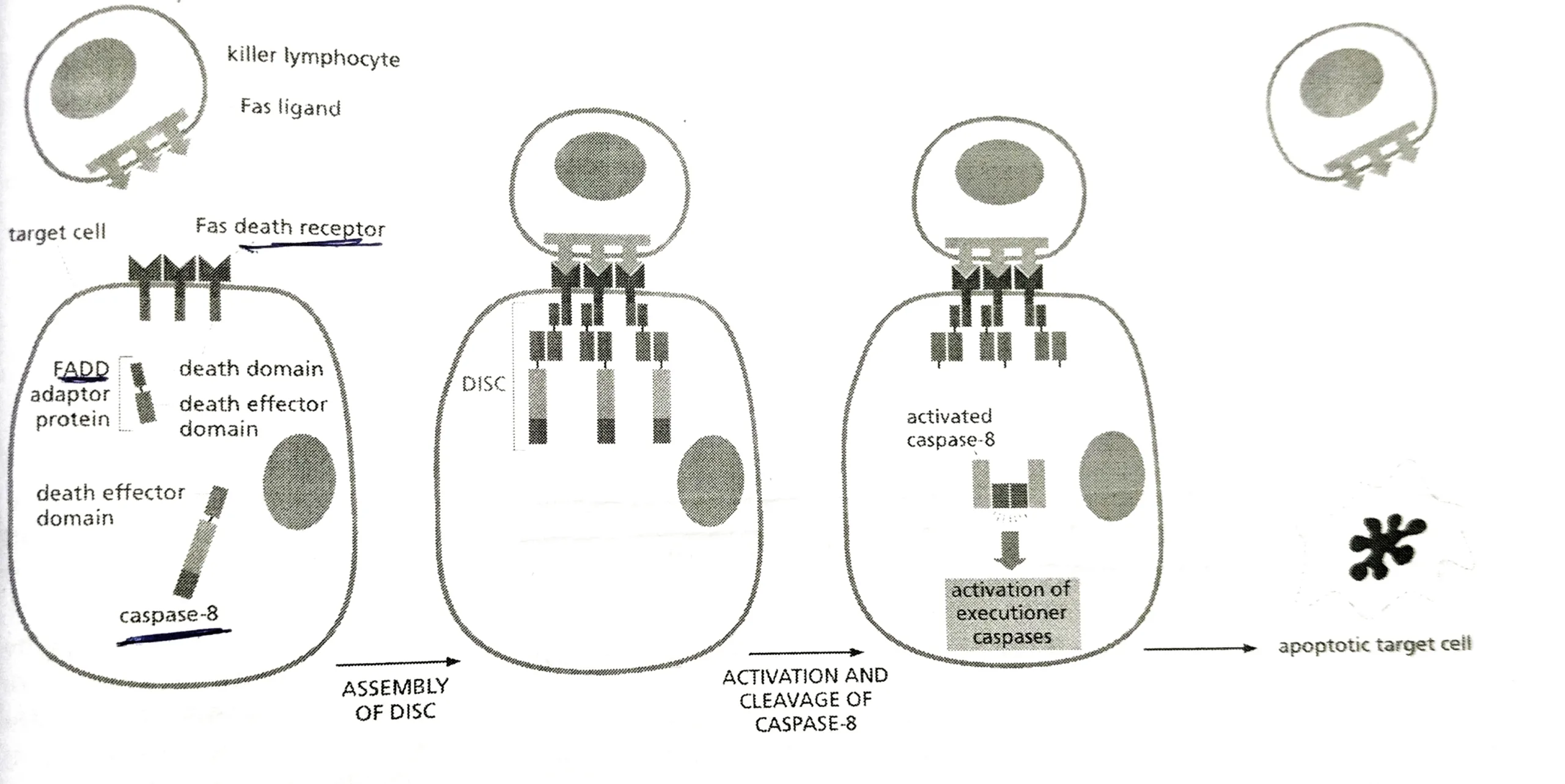Table of Contents
There are two types of apoptosis pathway. The first one is extrinsic apoptosis pathway and the another one is intrinsic apoptosis pathway.
The extrinsic pathway of Apoptosis: Cell-surface Death receptors activate this apoptosis pathway:
- Death receptors (binds to the extracellular signal proteins) are a transmembrane protein containing an extracellular ligand binding protein (a single transmembrane domain) and an intracellular death domain, which is needed for the receptors to activate the apoptosis pathway.
- The receptors and the ligands both are homotrimers and belong to the tumor necrosis factor (TNF) receptor family.
- The activation of Fas on the surface of a target cell by Fas ligand on the surface of a cell (a killer lymphocyte- cytotoxic) is a key procedure of the extrinsic pathway of apoptosis.
- When activated by the binding of the Fas ligand, the death domains on the cytosolic tails of the Fas death receptors bind intracellular adaptor proteins FADD (Fas-associated death domain), which in turn bind initiator caspases (caspase-8), forming a death-inducing signaling complex (DISC).
- Once dimerized and activated in the DISC, the initiator caspases cleave their partners and then activate downstream executioner caspases to induce apoptosis.
- In some cells, the extrinsic pathway recruits the intrinsic apoptotic pathway to amplify the caspase cascade and kill the cell.
The diagram of the extrinsic pathway of apoptosis:
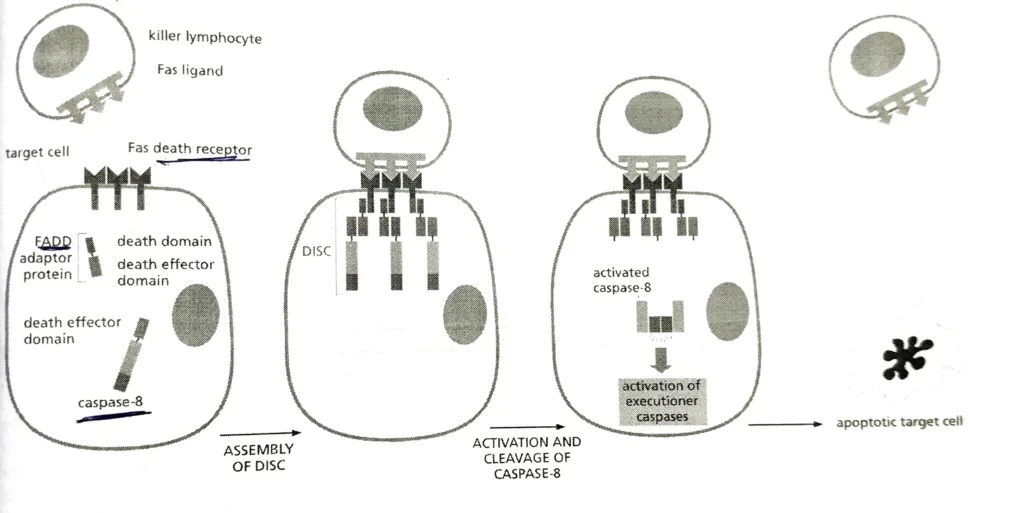
The restriction of the extrinsic pathway of apoptosis:
- Many cells produce inhibitory proteins that act to restrict the extrinsic pathway of apoptosis.
- Some cells produce the protein FLIP, which resembles an initiator caspase but has no protease activity because it lacks the key cysteine in its active site.
- FLIP dimerizes with caspase 8 in the DISC to form an active heterodimer.
- It is not cleaved at the site required for its stable activation, and the apoptotic signal is blocked.
- Such inhibitory mechanisms help prevent the inappropriate activation of the extrinsic pathway of apoptosis.
The Intrinsic pathway of apoptosis: Depends on Mitochondria:
- Cells can activate their apoptosis program from inside the cell, often in response to stresses, such as DNA damage, or in response to the developmental signals.
- In vertebrate cells, these responses are taken care by the intrinsic pathway of apoptosis or mitochondrial pathway of apoptosis.
- It depends on the release into the cytosol of mitochondrial proteins that normally reside in the intramembranous space of mitochondria.
- A key protein in the intrinsic pathway is cytochrome c, a water soluble component of the mitochondrial electron-transport chain .
- When released into the cytosol, it binds to an adaptor protein called Apaf1 ( apoptotic protease activating factor-1), causing the Apaf1 to oligomerize into a wheel-like heptamer called an apoptosome.
- Each Apaf1 contains a caspase recruitment domain (CARD) and these are accumulated at the center hub of the apoptosome.
- The Apaf1 proteins in the apoptosome recruit initiator caspase-9 proteins, which are thought to be activated by proximity in the apoptosome. This is like the caspase-8 activation in the DISC.
- The activated caspase-9 molecules then activate downstream executioner caspases to induce apoptosis.
The Intrinsic pathway of apoptosis: Bcl2 protein regulates this apoptosis pathway:
This explanation is well explained in the diagram below. The diagram is informative and appropriate for the exam point-of-view.
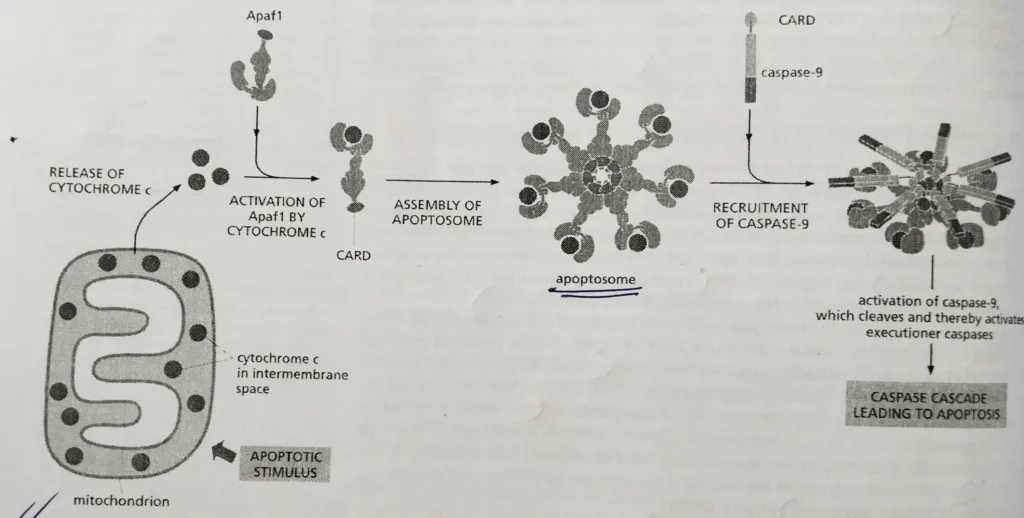
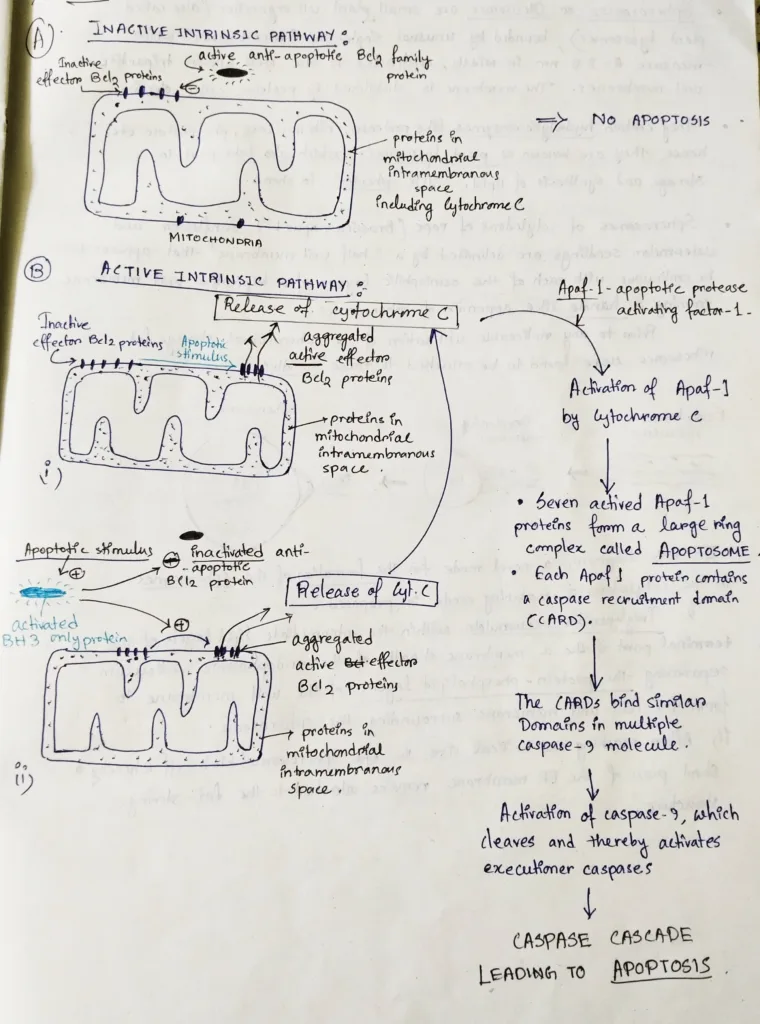
The types of Bcl2 family proteins are presented in the diagram below:

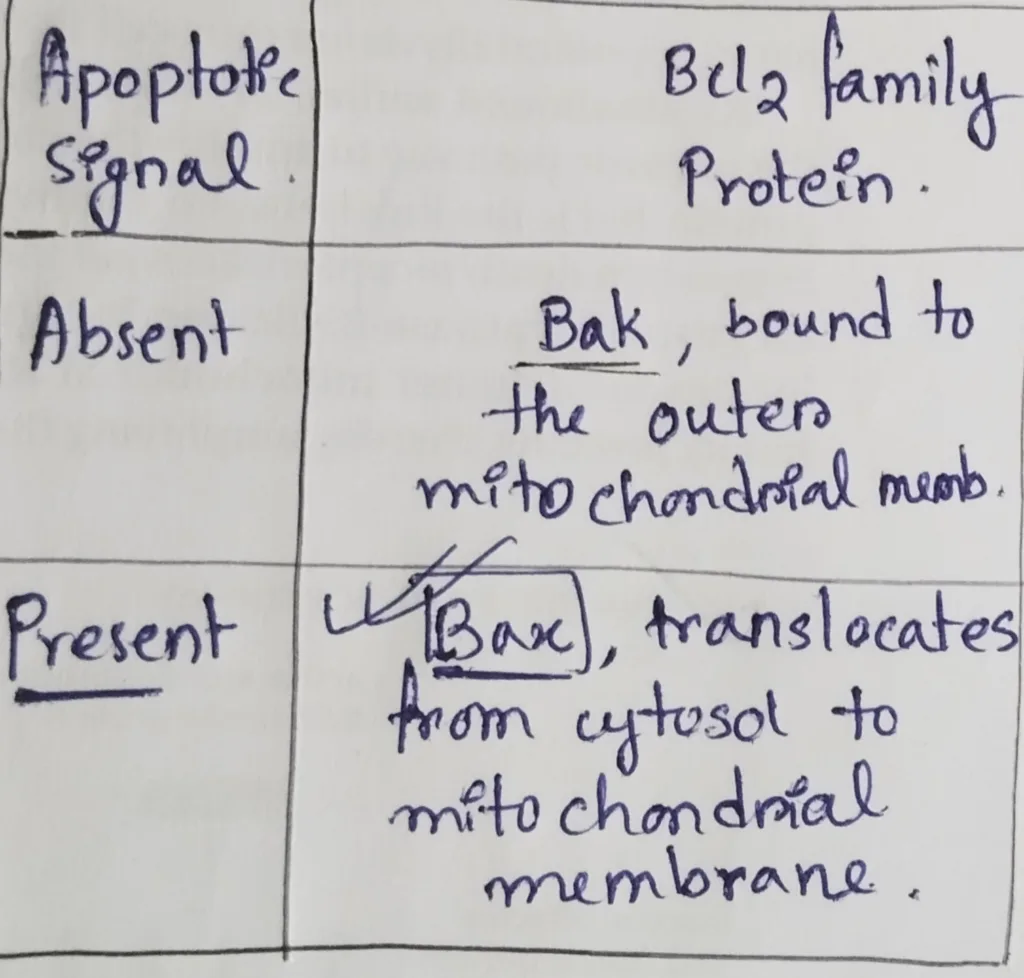
This note is made from the Cell Biology Book by Albert.
Other related notes:
- Cell cycle checkpoints: https://thebiologyislove.com/cell-cycle-checkpoints/
- Useful numbers for Cell culture: https://thebiologyislove.com/useful-numbers-for-cell-culture/
Facebook link: https://www.facebook.com/share/p/oPmgX6nuJ2CUAqku/?mibextid=oFDknk
Instagram Link: https://www.instagram.com/p/C6yqOp2NDaf/?igsh=OGNzd3dwd2JrZmow

